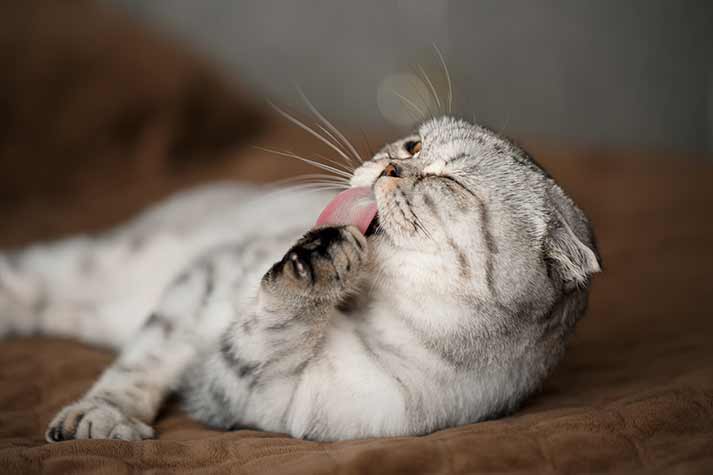


29 Oct
Grooming isn’t just about keeping your pet looking good, it’s a crucial part of their overall health and comfort. Regular grooming helps maintain a healthy coat, reduces shedding, prevents matting, and keeps skin, nails, and ears in great condition. However, many pet parents face pet grooming behaviour issues that make the process stressful for both them and their pets. From a dog that refuses to sit still to a cat that hisses at the sight of a brush, these common cat/dog grooming problems can be frustrating. But the good news is that with the right approach and a bit of patience, you can learn how to fix grooming problems in pets and make grooming a positive experience.
One of the most frequent grooming issues pet parents face is resistance to brushing. Your pet might squirm, flinch, or try to escape the moment you pick up the brush. This usually happens when the pet isn’t used to grooming tools or associates brushing with discomfort. Sometimes, tangled fur or sensitive skin makes the experience unpleasant.
The key here is gentle introduction. Start slow, let your pet sniff the brush, reward calm behaviour and use short grooming sessions at first. Over time, gradually increase the duration. Consistency is crucial. If you make brushing a regular, positive experience, your pet will soon begin to accept and even enjoy it. For pets with mats or irritation, a quick vet check helps ensure you’re not causing pain unknowingly.
Bath time can easily become a battle. Many dogs and cats get anxious at the sound of running water, the feel of shampoo, or the noise of dryers and clippers. Fear often stems from past negative experience or unfamiliar sensations.
To fix this, focus on desensitization and comfort. Before introducing water, let your pet explore the bathing area calmly. You can run the tap gently while offering treats so they begin associating the sound with something positive. If possible, choose a quiet environment and use warm water. For pets that hate loud grooming tools, consider towel drying or quieter dryers. Incorporating pet grooming training commands like “stay” or “settle” also helps you maintain control while keeping your pet relaxed. Remember, never rush the process. A calm approach goes a long way.
Nail clipping is another common cause of stress. Many pets dislike having their paws touched, and one painful clipping in the past can make them fearful for life. The trick is gradual exposure. Start by gently handling your pet’s paws every day without actually clipping the nails. Offer treats and praise to build trust.
When you start clipping, use proper tools and only trim tiny bits at a time. If you’re nervous about cutting too short, ask your vet or groomer to demonstrate the right technique. Over time, your pet will get used to the sensation. Making paw handling a part of your everyday routine, not just grooming day, helps normalize it and reduce anxiety.
Some pets respond to grooming with growling, biting, or defensive posturing. This is a serious issue, often linked to fear, discomfort, or lack of trust. In such cases, punishing or forcing your pet will only make things worse. Instead, the focus should be on creating a sense of safety.
Start with short, non-threatening grooming sessions, use a calm tone, and reward good behaviour generously. If your pet is particularly fearful, professional pet grooming training or working with a behaviourist can help. Choosing a patient, certified groomer who understands your pet’s triggers can also make a big difference. Building trust is the foundation of fixing aggression-related grooming problems.
Many pets find it hard to stay still, especially during long grooming sessions. They might squirm, jump, or try to escape. Usually, this stems from restlessness or not being used to restraint. To improve this, practice short “stay” sessions outside of grooming times. Create a non-slippery, comfortable grooming spot and ensure your pet feels secure. Break long grooming routines into smaller segments and praise calm behaviour each time. Over time, these small steps make your pet more tolerant of longer sessions.
Grooming doesn’t stop at home. If you’re preparing for pet travel, good grooming habits are even more important. A clean, well-maintained coat prevents matting and discomfort during long journeys. Regular brushing also reduces shedding in confined travel spaces. Before trips, make sure your pet’s nails are trimmed to prevent injury, and their fur is clean and manageable.
Travel can amplify anxiety, so maintaining grooming routines before and during travel can help keep your pet calm. Pack familiar brushes, towels, and grooming essentials to give your pet a sense of comfort even in new environments. Regular grooming also ensures that your furry friend looks and feels their best wherever you go.
Addressing pet grooming behaviour issues takes time, patience, and consistency. The key is to create positive associations, make grooming a time for bonding rather than stress. Whether you’re dealing with brushing resistance, nail-trimming fear, or bath anxiety, always approach the process with empathy. Remember, pet grooming training is a gradual journey, not a one-time fix. With the right mindset and gentle practice, even the most reluctant pets can learn to love grooming.

AUTHOR’S BIO
Shivangi Lawania
Storytelling is my way of bringing ideas to life. I enjoy shaping words that spark curiosity and connection, while keeping a strong focus on branding and communication. For me, great content blends creativity with clarity to leave a lasting impression.